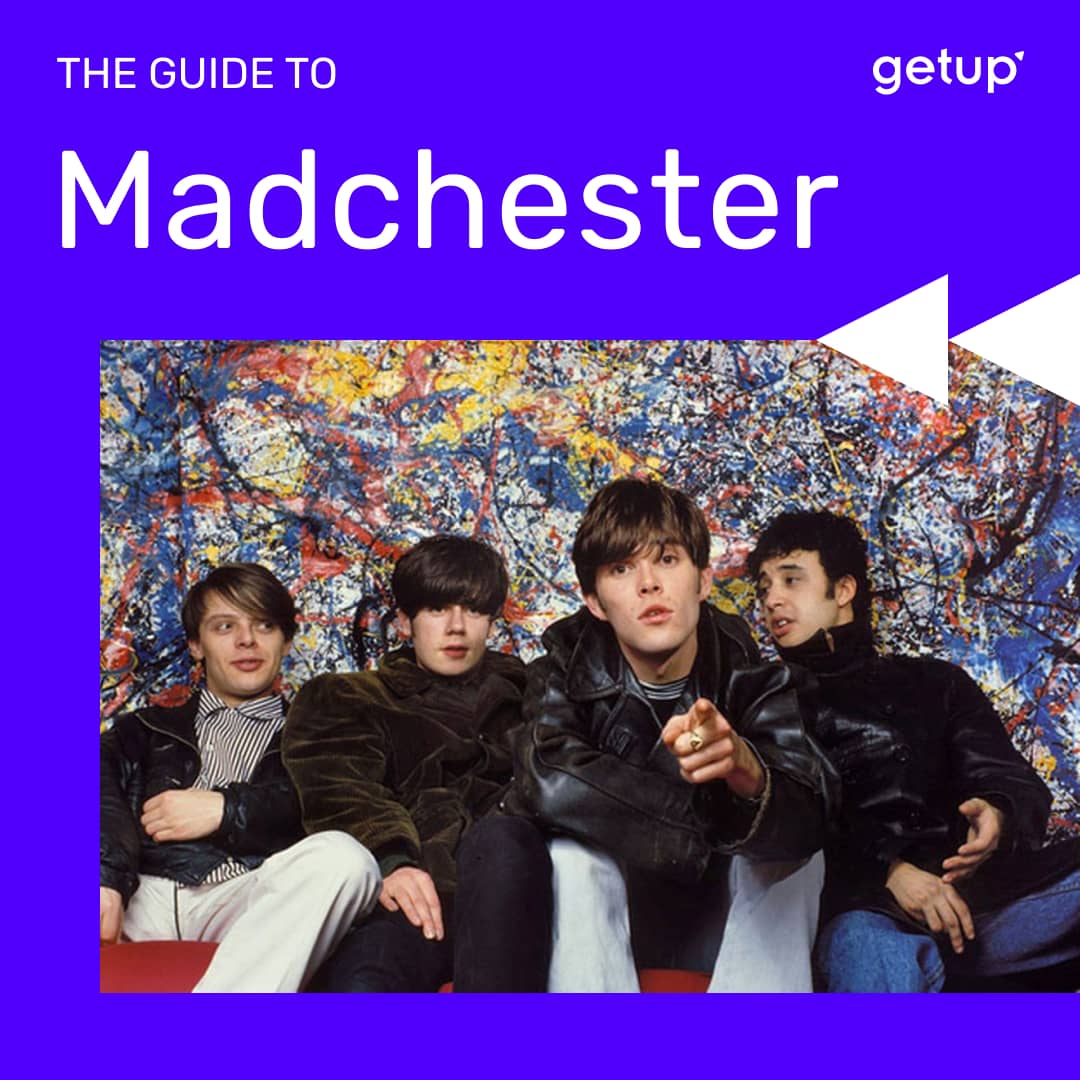At the end of the 1980s, rock was at one of its many crossroads. There were two possible routes to go down: continue on the path of the electric guitar riff and make do with headbanging at gigs, or join the burgeoning club culture without abandoning the concept of the band and its instruments. Manchester, a city in the north of England that gave birth to part of punk and new-wave, soon became the epicentre of the Madchester trend. This was where local indie rock met the acid house that had been seeping into the British Isles since the new Summer of Love in 1988.
A city with an already rich music scene (The Fall, Buzzcocks, Joy Division, The Smiths, etc), Manchester bloomed with the opening of The Haçienda, a concert venue affiliated to Factory Records label, in 1982. At around 1986 it became a club, and the following year it turned to acid house thanks to DJs like Dave Haslam. In the meantime, groups from the label such as New Order, A Certain Ratio, and Section 25 were embracing synths and drum machines. Not only was the place a huge success, but the club soon became the epicentre for a new desire to party, whilst the rock scene was beginning to go round in circles. A drug from rave culture – ecstasy – was also opening up new horizons. Released in 1989, New Order’s album Technique was marked by an obvious house influence, just a few years after the legendary single, “Blue Monday”, arguably rock’s historic first step towards electronic music.
The beginning of the 90’s saw the emergence of bands that integrated a dance spirit into their rock. Despite their different beginnings, groups like the Stone Roses, Inspiral Carpets, James, and the Happy Mondays all seem to have taken the same turn. Take the Happy Mondays – huge consumers of every illicit drug on the market, they were exciting for their capacity to merge northern soul, funk, pop, and acid rhythms. As for the Stone Roses, they became the object of a massive cult following in the space of one groovy album, full of psychedelic, hypnotic anthems. At the same time, the city’s electro scene was developing, bringing to light the group 808 State. One of their members went solo under the name A Guy Called Gerald, and all of them went on to become influential producers.
Madchester was also a trend that the music media in London fell in love with, shining the spotlight on the city’s music scene. Bands like World of Twist, New Fast Automatic Daffodils, The High, Northside, and Paris Angels took advantage of this to make a name for themselves, and the genre started to spread throughout England with The Soup Dragons, Ocean Color Scene, and Flowered Up. However, pretty soon the same media who stoked the flames turned their backs on these new groups.
The legacy of Madchester, a movement that ran out of steam in about 1990, lives on in a whiff of madness, a look (baggy trousers, long-sleeved t-shirts that go down to the knees, bucket hats and bowl haircuts) and a sense of pride in cocky northern rock. It’s what you hear when you listen to Liam Gallagher of Oasis, whose brother Noël started out as a roadie for Inspiral Carpets. The most important thing to have come from the Madchester movement was the setting in motion of a meeting between rock and electro music, a transformation that the world has never looked back on. DJs such as Andrew Weatherall took up the torch, first by bringing Primal Scream to the dancefloor with the remix “Loaded”, and subsequently throughout his career as a producer. Madchester’s echo can also be heard in Blur’s britpop, another case of English rock’s ability to perpetually renew itself from the ashes of what came before.




.jpg)
.jpg)
.jpg)
.jpg)